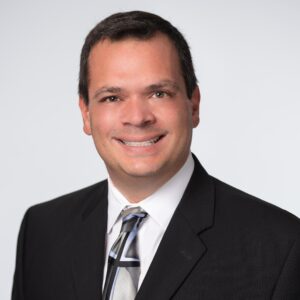The marriage of the RAI, compliance and education
The Centers for Medicare & Medicaid Services presented modifications in January to the Resident Assessment Instrument (RAI), which become effective on April 1, 2012. Since the launch of MDS 3.0 in October 2010, there have been regular modifications to the RAI Manual, leaving nursing facilities with the sense that the new tool is similar to standing in a changing tide. Once you feel the sand solidly under your feet, the tide rolls up and either covers your feet with more sand, or pulls the sand out from under you, weakening the foundation on which you are standing. It is always changing. The only way to stay on top of these changes is constant education.
Adding to this challenge is the new mandate included in the Patient Protection and Affordable Care Act (ACA) of 2010 that requires a compliance and ethics program for nursing home providers. To the naked eye, it looks like regulation on top of more regulation. However, when assessing the original purposes of the RAI process and the more recent ACA accountability requirements for skilled nursing facilities and nursing facilities, the two processes are designed to create the same outcomes: quality care. How can quality care be achieved through these regulatory processes? It will require first linking the processes and then providing staff education.
ETHICS AND RAI
The RAI process consists of three main sections, beginning with completion of the MDS tool, which is designed to evaluate the resident’s functional status. Care Area Assessments is the second section and serves to provide more in-depth functional assessments in areas identified by the MDS as potentially problematic. The third section is the care plan, which is developed based on the outcomes of the Care Area Assessment results. Each section focuses on care of the individual. The RAI process in total serves to create a holistic view of the resident and, with accurate completion, is considered indicative of the kind of care a resident is receiving. Inaccurate completion has consequences and will negatively affect a facility’s survey as well as reimbursement. Internal oversight and staff education of the process are needed to ensure successful outcomes.
 Section 6102 of the ACA calls for a different type of accountability requirement that includes a compliance and ethics program designed to prevent and detect “criminal, civil, and administrative violations under this Act and in promoting quality of care consistent with regulations[….]” This requirement is designed to reduce fraud and related consequences and therefore has a strong relationship with the RAI process. Payment to SNFs is tied to the outcomes of the MDS 3.0, and inaccurate or fraudulent completion of the MDS or related Prospective Payment System and Rehabilitation Utilization Groups (RUGs-IV) should serve to be a focus of any compliance/ethics model put in place by facilities. Although the ACA states that an organization may utilize a “model compliance program,” it is important to note that there is no mandate currently for a model program.
Section 6102 of the ACA calls for a different type of accountability requirement that includes a compliance and ethics program designed to prevent and detect “criminal, civil, and administrative violations under this Act and in promoting quality of care consistent with regulations[….]” This requirement is designed to reduce fraud and related consequences and therefore has a strong relationship with the RAI process. Payment to SNFs is tied to the outcomes of the MDS 3.0, and inaccurate or fraudulent completion of the MDS or related Prospective Payment System and Rehabilitation Utilization Groups (RUGs-IV) should serve to be a focus of any compliance/ethics model put in place by facilities. Although the ACA states that an organization may utilize a “model compliance program,” it is important to note that there is no mandate currently for a model program.
The Office of the Inspector General (OIG) has resisted mandating a current model for the ACA requirement, but it is clear that a program must be in place. Organizations, if they have not already launched a compliance program of their own, should do so. That compliance and ethics program should include organizational oversight of the RAI process, as there have been recent instances where miscoding has occurred in the RAI and PPS process, causing allegations of fraud.
NEED TO EDUCATE
New York State recently identified a situation where nursing assistants who were responsible for completing the RUGs-IV ADL section had been inaccurately documenting resident function. The report suggests they were “copycatting” RUGs information for their residents’ activities of daily living. The codes that were allegedly used vastly understated many residents’ functional capabilities. This has resulted in charges of fraud and will likely bring about both large civil monetary penalties and criminal charges.
There are allegations that these misdeeds occurred because the nursing assistants were neither well supervised nor well educated in how to properly complete a RUGs form. A compliance program in addition to simple staff education could have served to avert the entire situation. This example is indicative of why the new compliance and ethics requirements were included in the ACA and serves as a cautionary tale as to why staff education must be included in that program.
The nursing facility compliance and ethics program implementation has already begun. The following is the current timeline in place for that program:
● December 31, 2011: The secretary of HHS shall establish and implement a quality assurance and performance improvement (QAPI) program for nursing facilities that will address best practices. Within one year of promulgation of the secretary’s QAPI program regulations, a nursing facility must submit a plan to HHS to meet such standards and implement such best practices. (A QAPI demonstration program was launched in August of 2011.)
● March 23, 2012: The secretary of HHS, working jointly with OIG, must promulgate regulations for “an effective compliance program” for nursing facility operating organizations. Those regulations “may” include a model compliance program and, with respect to specific elements of the program, “shall” vary with the size of the operating organizations for organizations that operate five or more facilities. Larger organizations are expected to have a more formal program, and requirements may “specifically apply to the corporate level management of multi-unit nursing home chains.” In other words, the nursing facility compliance program regulations should contain an element of scalability and proportionality.
● March 23, 2013: Skilled nursing facilities and other nursing facilities must have “in operation” a compliance and ethics program that meets the law’s criteria.
● March 23, 2013: The secretary of HHS shall have completed “an evaluation” of the compliance and ethics program that nursing facilities will be required to establish. Nursing facilities are not required to have in operation those compliance and ethics programs until the same day the secretary’s evaluation is supposed to be completed.
● After March 23, 2013: The secretary of HHS must submit an evaluation report to Congress with recommendations on changes to the regulatory requirements for nursing facility compliance programs.
AN OPPORTUNITY
Facilities are already required to undertake completion of the RAI. Now it is necessary to add a written compliance and ethics program to that regulatory requirement. The ACA regulation is written with the understanding that not all organizations are created equal or even have the exact same needs. Getting ahead of the process by creating your own compliance and ethics program that incorporates the RAI process, then providing education on those processes now, could avert huge problems later. Facilities are being given that opportunity.
Hopefully the long-term care community will take this occasion to create a way forward that not only meets the regulatory requirements, but also allows some flexibility among organizations. The current regulation seems to be written with the understanding that there is more than one way to complete a job. Forewarned is forearmed. Put together an inclusive compliance and ethics program that will allow internal oversight of processes—and then educate staff on these practices. It could save time, money and pain later.
Ingrid Johnson Serio, RN, BSN, MPP, RAC-CT, C-NE, is the Director of Content Management for AANAC. She can be reached at iserio@aanac.org.

I Advance Senior Care is the industry-leading source for practical, in-depth, business-building, and resident care information for owners, executives, administrators, and directors of nursing at assisted living communities, skilled nursing facilities, post-acute facilities, and continuing care retirement communities. The I Advance Senior Care editorial team and industry experts provide market analysis, strategic direction, policy commentary, clinical best-practices, business management, and technology breakthroughs.
I Advance Senior Care is part of the Institute for the Advancement of Senior Care and published by Plain-English Health Care.
Related Articles
Topics: Articles , Facility management , MDS/RAI , Regulatory Compliance











